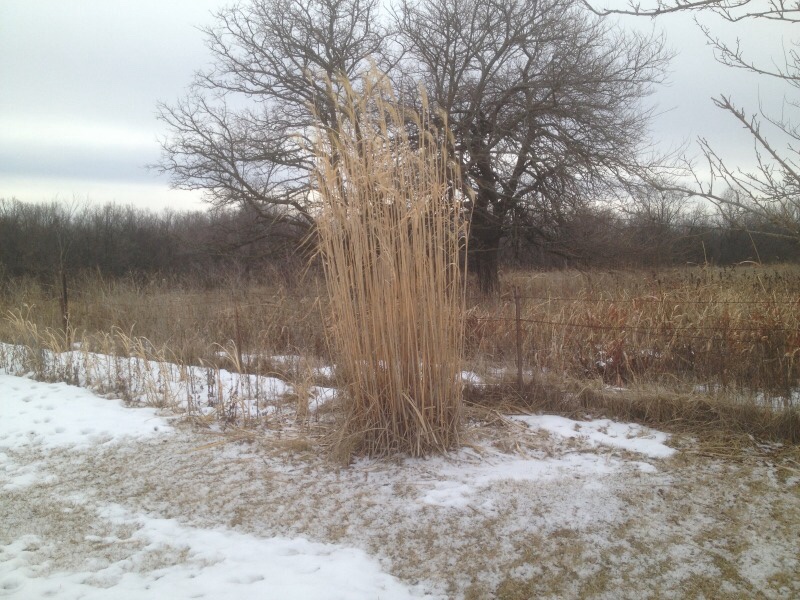In order to avoid high-jacking Bill's excellent thread on propagating Miscanthus, I thought I'd share my experiences to the extent they may help others. I'll start by showing how I prepare them in the spring for new growth AND what I believe are the 2 most important things (competition and sufficient moisture) to remember when growing Miscanthus. I use loppers or a chain saw to cut the old stalks off within a few inches of the ground; and, I install a heavy wood mulch (I get it free from the city) extending 18-24" away from the plant. Why is the mulch so important; 2 reasons ... it chokes out competition and it helps keep the plant hydrated. With regard to competition, Miscanthus doesn't start growing until the soil temp reaches 55-60 degrees; other cool weather grasses/weeds can get a big head start and really restrict the growth of your plants (if you raise them BIG, it takes fewer plants to create a screen). Although Miscanthus won't tolerate wet feet very well, it loves water and thrives best when it gets an ample amount on a regular basis (again, the value of mulch). If, later, you decide to subdivide one/some of your existing plants, remember to plant the subdivided plant so that the crown of the plant is above the surrounding soil line to avoid crown rot in the plant (water can also be it's nenesis). 







 ransplant is slightly higher than the surrounding soil line (avoid crown rot if the plant can't shed excess water - it loves water but water can be it's nenesis). The second photo and last photo are pictures of transplants I made last week (they are yet to be mulched).. You will also notice my plants are not real close to one another; with a good competition-eliminating-water-saving mulch, I believe less is more with regard to Miscanthus.
ransplant is slightly higher than the surrounding soil line (avoid crown rot if the plant can't shed excess water - it loves water but water can be it's nenesis). The second photo and last photo are pictures of transplants I made last week (they are yet to be mulched).. You will also notice my plants are not real close to one another; with a good competition-eliminating-water-saving mulch, I believe less is more with regard to Miscanthus.








 ransplant is slightly higher than the surrounding soil line (avoid crown rot if the plant can't shed excess water - it loves water but water can be it's nenesis). The second photo and last photo are pictures of transplants I made last week (they are yet to be mulched).. You will also notice my plants are not real close to one another; with a good competition-eliminating-water-saving mulch, I believe less is more with regard to Miscanthus.
ransplant is slightly higher than the surrounding soil line (avoid crown rot if the plant can't shed excess water - it loves water but water can be it's nenesis). The second photo and last photo are pictures of transplants I made last week (they are yet to be mulched).. You will also notice my plants are not real close to one another; with a good competition-eliminating-water-saving mulch, I believe less is more with regard to Miscanthus.













